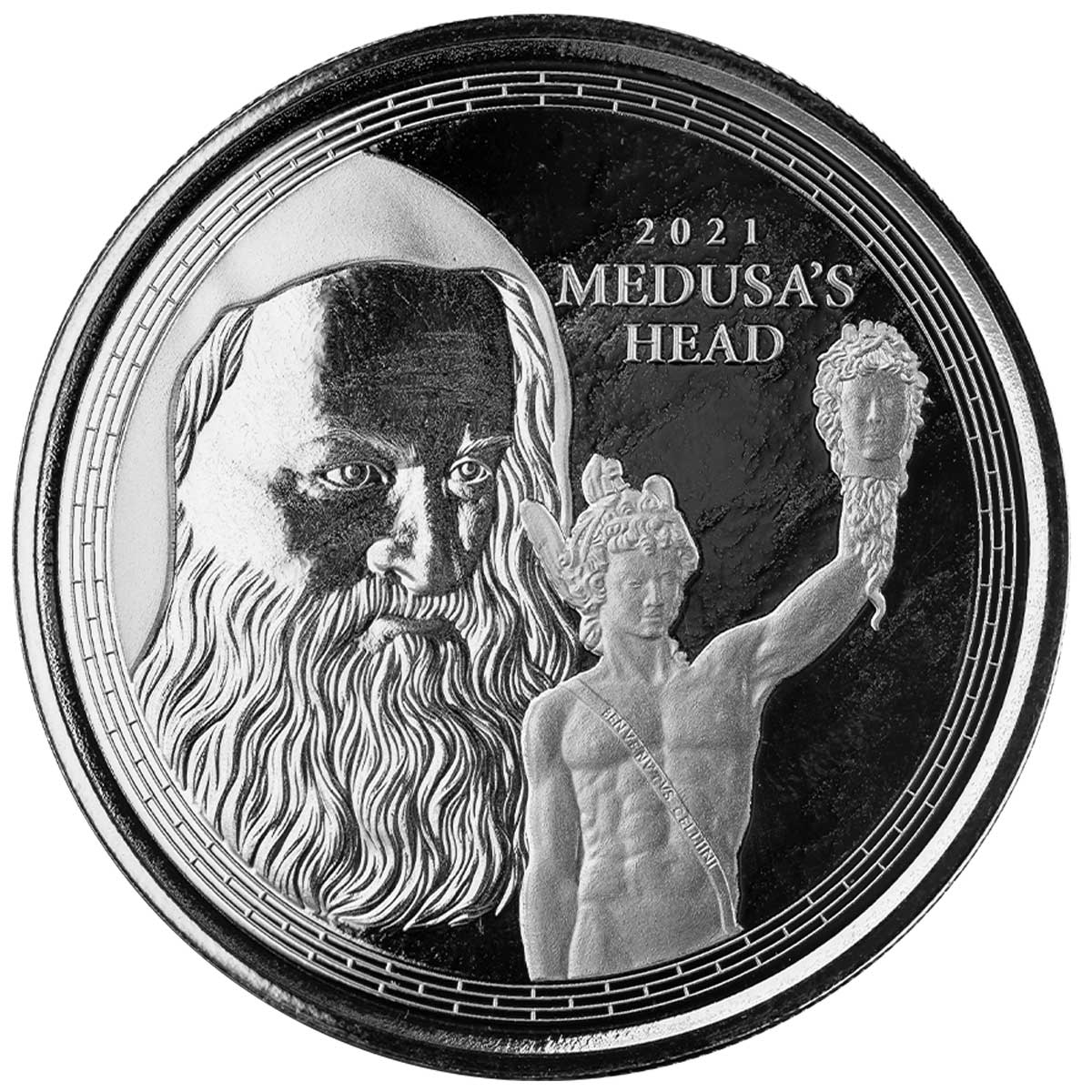Gibraltar rejoins the Scottsdale Mint’s bullion portfolio with its four-variant Perseus and Medusa’s Head by Cellini
Back with another bullion coin, just a week or so after the launch of its latest Eastern Caribbean 8 issue, is the Scottsdale Mint with a new one for Gibraltar. A prolific producer, Scottsdale has a mix of solo and series releases, but this one is quite new, and their first release for Gibraltar since the Royal Arms range in late 2018. The subject is an impressive one. Cellini’s 1545 ‘Perseus with the head of Medusa” is an exquisite piece of sculptural art, and was made to stand alongside some contemporary works in Florence, which included Michaelangelo’s ‘David’, and works by Donatello and Bandinelli – exalted company, indeed. Depicting the hero holding the head of the Gorgon, Medusa, while standing over the body, it was made to celebrate the Medici family in the most overt way possible at the time.
PERSEUS WITH THE HEAD OF MEDUSA
Perseus with the Head of Medusa is a bronze sculpture made by Benvenuto Cellini in the period 1545–1554. The sculpture stands on a square base which has bronze relief panels depicting the story of Perseus and Andromeda, similar to a predella on an altarpiece. It is located in the Loggia dei Lanzi in the Piazza della Signoria in Florence, Italy. The second Florentine duke, Duke Cosimo I de’ Medici, commissioned the work with specific political connections to the other sculptural works in the piazza. When the piece was revealed to the public on 27 April 1554, Michelangelo’s David, Bandinelli’s Hercules and Cacus, and Donatello’s Judith and Holofernes were already installed in the piazza.
The subject of the work is the mythological story of Perseus beheading Medusa, a hideous woman-faced Gorgon whose hair had been turned to snakes; anyone who looked at her was turned to stone. Perseus stands naked except for a sash and winged sandals, triumphant on top of the body of Medusa with her head, crowned with writhing snakes, in his raised hand. Blood spews from Medusa’s severed neck. The bronze sculpture, in which Medusa’s head turns men to stone, is appropriately surrounded by three huge marble statues of men: Hercules, David, and later Neptune. Cellini’s use of bronze in Perseus and the head of Medusa, and the motifs he used to respond to the previous sculpture in the piazza, were highly innovative. Examining the sculpture from the back, one can see a self-portrait of the sculptor Cellini on the back of Perseus’ helmet.
The sculpture is thought to be the first statue since the classical age where the base included a figurative sculpture forming an integral part of the work. (Wikipedia)
| SPECIFICATION | ||||
| DENOMINATION | £1 GBP | £1 GBP | £1 GBP | £10 GBP |
| COMPOSITION | 0.999 silver | 0.999 silver | 0.999 silver | 0.9999 gold |
| WEIGHT | 31.1 grams | 31.1 grams | 31.1 grams | 31.1 grams |
| DIAMETER | 38.6 mm | 38.6 mm | 38.6 mm | 38.6 mm |
| FINISH | B/Unc | Antique | Proof | Proof |
| MODIFICATIONS | None | None | None | Colour |
| MINTAGE | 10,000 | 2,000 | 1,000 | 100 |
| BOX / C.O.A. | No / No | No / No | No / No | Certi-Lock |










Leave A Comment